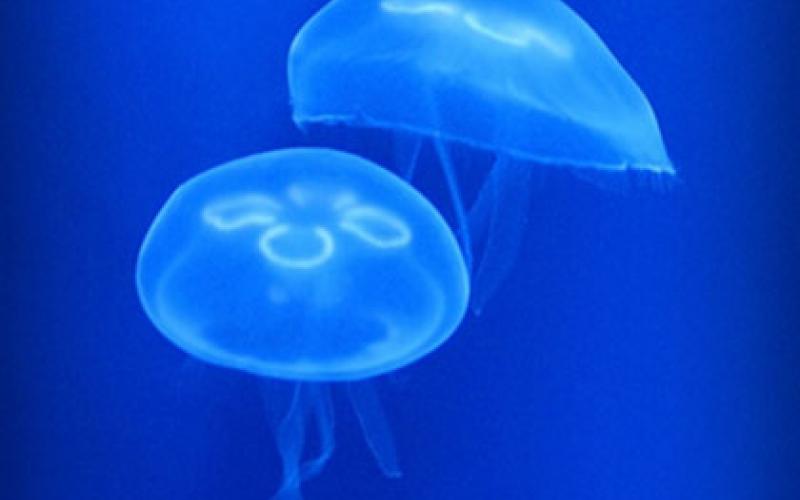Jellyfish blooms cause marine ecosystems to leak energy

Jellyfish blooms cause marine ecosystems to leak energy
Jellyfish blooms are an increasingly frequent problem in many parts of the world. While it has long been understood that these blooms deprive fish and other species of food, new research sheds light on how they disrupt the ecosystem in ways that reduce the productivity of the oceans.
Original Paper
Robert H. Condon, Deborah K. Steinberg, Paul A. del Giorgio, Thierry C. Bouvier, Deborah A. Bronk, William M. Graham, and Hugh W. Ducklow. "Jellyfish Blooms Result in a Major Microbial Respiratory Sink of Carbon in Marine Systems." Proceedings of the National Academy of Sciences 108, no. 25 (2011): 10225.
During a bloom, jellyfish vacuum up the plankton near the bottom of the marine food chain. But because jellyfish have few predators, little of this energy moves directly up the food chain to higher-order organisms. A small portion of the energy moves up the food chain after the jellyfish die and decompose, but most instead simply dissipates. The contribution of this research, which was led out of the Virginia Institute of Marine Science and appeared in the Proceedings of the National Academy of Sciences, is a proposed mechanism for where this energy goes.
Jellyfish shed enormous quantities of slime, a form of dissolved organic matter artfully christened Jelly-DOM by the authors. Through a combination of field surveys and lab experiments, they investigated the fate of Jelly-DOM in the marine ecosystem and were able to link it to ecosystem energy losses.
Most organic matter in marine environments has a carbon-to-nitrogen ratio of about 6-to-1, a proportion so basic to marine ecology that it has it's own name: The Redfield Ratio. The researchers found thatJelly-DOM has a carbon-to-nitrogen ratio up to five times higher, or 30-to-1.
To probe the significance of this elevated carbon ratio, the researchers raised a naturally occurring assemblage of marine bacteria in the lab, both with and without Jelly-DOM, and then measured the bacterial rates of respiration and growth. Bacteria that were fed Jelly-DOM respired more, but grew 10-15% less than the control group, indicating that much of the carbon from Jelly-DOM was gassed off as CO2 rather than incorporated into bacterial biomass that might move up the food chain. What's more, certain species of bacteria that are relatively rare in the ocean came to dominate when Jelly-DOM was the food source. Together, these results imply that Jellyfish blooms both reduce marine productivity and alter the structure of the microbial community.
The key proposition of this paper is that jellyfish, through the shedding of Jelly-DOM, take carbon that would otherwise become biomass and divert it into the atmosphere. The authors call the mechanism by which this occurs the "Jelly-Carbon Shunt." The jellyfish species they used in this study are found throughout the world, in both nutrient-rich and nutrient-poor environments, and are considered an aggressive invasive species. The Jelly-Carbon Shunt may therefore impact ocean food webs globally.
Significant questions remain about whether the Jelly-Carbon Shunt operates in the open ocean as it does in coastal environments. But as the planet's marine environments experience increased ecological stress, a better understanding of the biogeochemical pathways induced during jellyfish blooms may help scientists more effectively manage marine resources.




